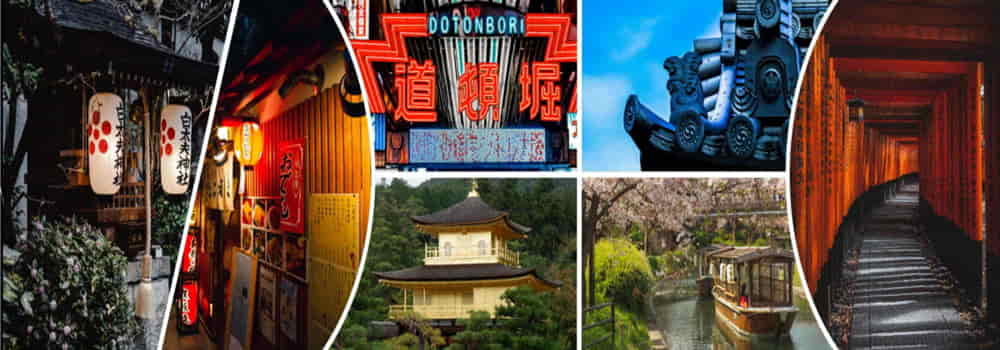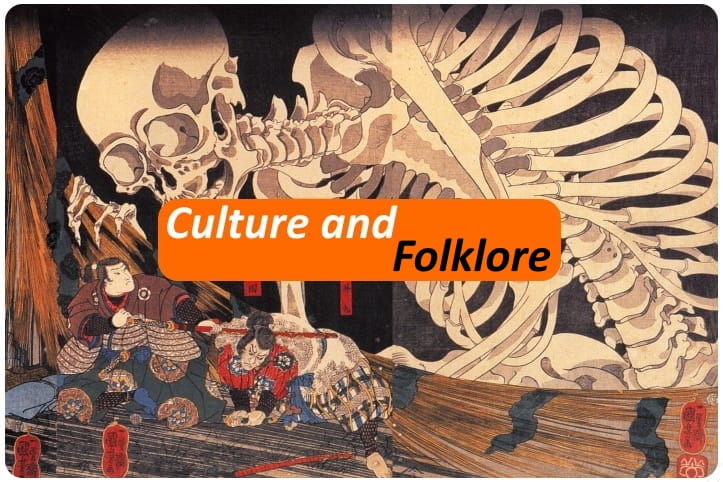The kamidana 神棚 is the small shrine in the house of the Japanese.

In all Japanese houses (but not only), or rather in those that follow Shintoism, there are small shrine that reproduce the Shinto shrines and inside there is the Kami (the divinity).
The kamidana are small or medium / large structures that reflect the architecture of Shinto shrines, in this case the models refer to the shape of the shrine of Ise (Miyagata), they can be of different types, the smallest have only "one door" others even more and inside it is kept an ofuda 御札, that is a sheet or a wooden "bar" on which are engraved formulas and names that embodies the god to be venerated.

The Japanese tradition imposes precise rules for those who have a kamidana at home, ancient codes that are still respected today to enjoy the maximum protection of the divinity and above all for the utmost respect towards them.
The small shrine should be installed in a bright and clean place, in a high position but still allowing it to be worshiped comfortably and appropriately. The position in where it's placed is important, because the kamidana must face south or east, preferably upstairs, so that it is as close as possible to the "sky". It should be avoided passage of people below, even if this is not always easy to respect, but one of the most important things is that it must never stand in front of the butsudan (Buddhist altar inside which there are representations of the deceased relatives). For the same reason, in the event that there is a death in the house or a wake, you must care to cover the kamidana with a sheet of white paper. This is because death and blood are considered as impure facts, and such things must be hidden from the divinity, covering it up spares them from this impure vision. Small historical parenthesis. In ancient times, menstruating women were forbidden to participate in Shinto celebrations because the blood is impure and does not suit the gods.

The Kamidana, as mentioned above, can be of different types, and above all their general composition can vary depending on the use and place. Yes, because these small shrines are not only found in Japanese homes, but also in shops, in some public places, in gyms and many other places. The focal point of the composition is the wooden structure which, depending on the size, but above all on the Kami you want to venerate, can have 1, 3 or 5 doors where "the divinity will go inside". On the same support surface (some Kamidana provide this space) there are objects that are used for veneration. We find a small mirror, a shinkyo (the one you always see in all Shinto shrines that recall one of the sacred objects of Japan), a small jar or some other support where to insert a sprig of sakaki (Clyera japonica, a small plant with large leaves) and a lantern on each side (although this option is rarer to see, especially inside houses). Difficult to find in apartments, but for sure you have seen it in shops and gyms, there may be the addition of a shimenawa (the sacred rope that delimits a consecrated place).
Small containers are added for veneration and offering to the deity: the mizutama 水 玉 is for water, the heiji contains sake, a saucer for rice and one for salt.
In the Kamidana there are objects that allow our offerings to the divinity, even these must respect very precise rules. The rice, sake, salt and water must be replaced every morning, the sakaki branches must be changed twice a month (usually on the first and fifteenth day). It may happen that for particular events you can arrange some sheets for an "intervention" to ensure that the requested thing is successful, such as something related to work or school for example. The arrangement of the offerings is also important: the rice goes to the center, the salt to the right and the water to the left. In the event that (often) sake is also offered, the water goes to the left followed by the sake, then the rice and finally the salt on the right.
A precise codification that has been handed down over the millennia and which still respects the main canons of the Shinto religion.
Last note on how divinity is prayed and worshiped. Usually one should thank the kami for his daily blessings and pray for his own or family's safety and happiness. The procedure to follow (also codified by the Shinto cult) should follow this line: "Two bows, two claps, one bow", a variant that can be used while remaining in the canons is "Two bows, four claps, one bow".

There is also the possibility of reciting the 神 棚 拝 詞, the kamidana prayer, this can be recovered from the sanctuary of the deity that is venerated. This last type of veneration is not widely practiced, everyone makes his personal prayer, his requests. In a world like the Japanese one that runs and time is a luxury, we don't often stop to pray, but certainly to give thanks.
I can tell you about my personal experience. A few years ago, I got a Kamidana in Tokyo, a beautiful single door model but not small, big enough. I limited myself to the minimum necessary by mounting it at home here in Italy, at the sanctuary, a glass with water (no sake unfortunately), a saucer with salt and one with rice. The bare minimum with some sacrifices unfortunately, but the necessary.
They have always fascinated me, I was struck by the ones I saw in shops and restaurants, large, complete with all the elements that would be seen in a main sanctuary. Respect for the kami for the Japanese is absolute, out of devotion or in some cases for conformity and in others to avoid "problems".
If you have also had experience, have you seen them (if you have been to Japan you have seen them for sure) tell us what do you think?

 English (United Kingdom)
English (United Kingdom)  Italiano (it-IT)
Italiano (it-IT) 






![[Review] Princess Toyotomiプリンセス トヨトミ](https://www.fukainihon.org//cache/mod_jt_contentslider/fdfb524f85518b9476158c79c8ea022f_328.jpg)


